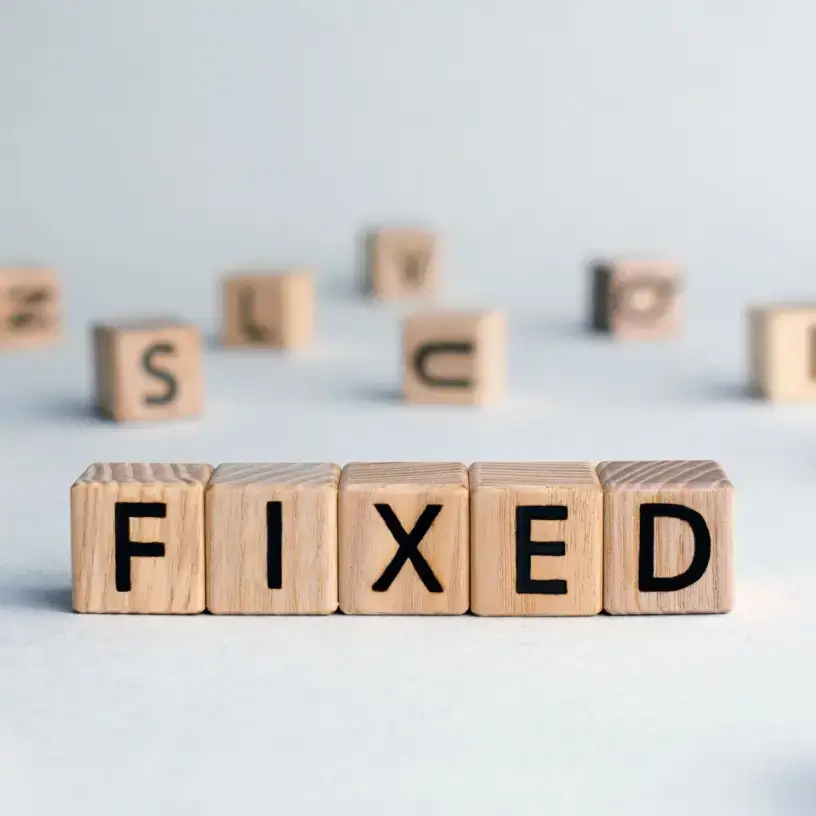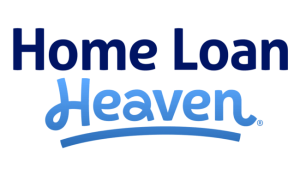Home / Home Loans / Fixed rate home loans ex…




Key takeaways
- Fixed rate home loans come with an interest rate that won’t change during an agreed-upon term, which is generally between one and five years
- The size of your home loan repayments won’t fluctuate during the fixed rate period, meaning a fixed rate home loan could help you budget more accurately.
- It’s important to know when your fixed rate period ends and to compare your options before that happens to avoid being saddled with a potentially non-competitive revert rate.
Fixed rate home loans explained


Hi, I’m Andrew Winter, host of Selling Houses Australia.
With years of property market experience under my belt I know for a fact that stability can
be invaluable when it’s needed.
And if you’re looking for a bit of stability and security when it comes to your home loan,
then a fixed rate home loan could be just the ticket.
A fixed rate loan is, well, a home loan with a fixed rate.
But what that means is that while you are on a fixed rate home loan, your interest rate
won’t change by even a fraction of a percent.
This is absolutely perfect for anyone who wants their home loan repayments to stay where they are.
They won’t go up, they won’t go down, your home loan repayments will stay the exact
same until your fixed rate period ends.
Now a fixed rate period will typically only be between one and five years, so it’s important
to remember that a fixed rate isn’t forever.
it’s more of a buffer, to give you a few years of financial surety in which you won’t
have to worry about interest rate changes or anything like that.
While we’re here, it’s worth mentioning that fixed rate home loans generally don’t
allow for much in the way of additional repayments you could even be charged a fee for doing so.
You may be able to find a fixed rate home loan with an offset account attached, but
beware of potential pitfalls – maybe the fixed rate period is only for a year, or maybe
it’s a partial offset instead of a 100% offset.
Lenders may also choose to charge a “break fee” if you pay out or refinance your home
loan within the fixed term – and these fees can be pretty hefty!
So, if you’re the type who wants to really get ahead on your home loan or you might want
to refinance or move in the near future, a fixed rate home loan may not match your financial priorities.
But they can be perfect for a wide range of borrowers, including first home buyers, refinancers looking
for a period of stability, and honestly anyone who loves being able to
budget everything down to the last dollar with absolute certainty.
Oh, I nearly forgot to mention!
At the end of the fixed rate period, you’ll usually be moved onto your lender’s revert
rate which might not be the cheapest interest rate out there!
This makes it crucial to shop around and compare your options before your fixed rate period ends.
Luckily, Compare the Market’s home loan comparison tool lets you weigh up a wide range
of home loans from a variety of lenders, and compare them on rates, fees, features and more!
They really do make it too easy.
And what’s more, if you find the right home loan for you, you can apply for it through
the same tool you’ve been using to compare.
So why would you settle for a higher rate!?
Compare home loans today, with Compare the Market.
Why take out a fixed rate home loan?
For borrowers with certain financial priorities, fixed home loan rates can offer:
- Certainty and stability, as you’ll know the exact cost of your home loan repayments for the length of your fixed-rate period
- Easier budgeting and cashflow management
- Protection against interest rate hikes
- Lower feature costs.
Choosing a fixed rate home loan
Here are a few things you should look out for when doing a fixed rate home loan comparison:
- Interest rates. Don’t just look at the advertised interest rate on offer; also look at the comparison rate of the loan and the revert rate, as this is likely to be the rate that you’ll be charged at the end of the fixed period if you don’t refinance or renegotiate your loan.
- Features. Fixed rate loans may not generally offer as many features as other types of loans, but some may still offer the ability to make additional repayments, a redraw facility or even an offset account. Keep in mind that interest rates and annual fees tend to increase in line with the inclusion of these kinds of features.
- Fees. Keep your eyes peeled for fees such as upfront and annual fees. Some lenders may not charge any of these on their fixed rate home loans, while some may charge higher-than-average fees. Be sure to check the key facts sheet of any home loan product you’re looking at, to figure out what kind of fees you might end up on the hook for.
- The fixed rate period and loan term. Consider how long you would like to fix your interest rate for (usually between one and five years), as well as your desired overall loan term. Both these things will influence the overall cost of the loan.
You may want to speak to a financial advisor or to one of our expert online mortgage brokers at this stage to get a clearer idea of what you might want from a home loan.
Expert tips for choosing the right fixed rate home loan for you
Our General Manager of Money, Stephen Zeller, wants to make sure homebuyers are choosing a home loan with the right factors in mind. His top tips when it comes to fixed rate home loans are:

Breaking a fixed loan can be pricey
Some homebuyers initially take out a variable rate home loan with the intention of fixing their rate later, in case they decide they don’t like the property or suburb they’re living in. If you decide you want to move for this reason, being on a fixed rate home loan could potentially entail not-insignificant break costs.
Consider a packaged loan option
Some lenders might offer you a lower fixed rate if you take out one of their ‘packaged’ home loan account options that come with an annual fee for features such as an offset account. No one likes additional fees, but if they unlock a lower rate, it may be worth considering – especially considering how many thousands of dollars homebuyers can pay in interest
We’re here to help
With so many different fixed rate terms and product options available, it can be daunting trying to figure out which products may suit your needs. Our online home loan comparison tool can provide you with an easy-to-read breakdown of the different rates available for various fixed terms, as well as provide an overview of any home loan products you’re interested in. We also have a team of expert online mortgage brokers on call who can talk you through any details or questions you’d like to talk through over the phone instead of online.
The basics of fixed rate home loans
What is a fixed rate home loan?
Fixed rate home loans are a type of home loan that come with a locked-in interest rate for one to five years. They can be used for either owner-occupied or investment loan purposes and you may be able to apply for interest-only repayments or principal & interest repayments.
This type of loan could be an option worth considering if you’re looking for certainty regarding your home loan repayments and don’t fancy the risk of facing an interest rate increase on a variable rate mortgage.
How do fixed rate home loans work?
A fixed rate home loan locks in your interest rate for a set period, which is generally from one to five years. For the fixed-rate periods, your home loan repayments will remain the same – if your interest rate doesn’t change, then neither do your interest repayments.
At the end of the fixed rate period, you’ll be shifted to your home loan revert rate (which can be higher than the average standard variable rate), and your home loan will essentially function as a variable home loan going forward.
What is a split loan?
A split loan is a home loan type divided into two components: one on a fixed interest rate and the other on a variable interest rate. This allows you to keep part of your loan on a fixed rate, while leaving the rest of your loan subject to rate changes.
These changes could be rate cuts or rate hikes, so it’s important to keep in mind that your variable rate portion could become more or less expensive depending on interest rate movements.
Should I fix my home loan?
Fixed rate home loans may not be a one-size-fits-all solution for those seeking stability over the entire life of the loan, since the maximum fixed rate period is generally only five years – however, these loans can still offer homebuyers several years of relative normality.
So, if you have an existing home loan and security is what you need right now, you may want to consider fixing your home loan interest rate. Additionally, first home buyers may have limited borrowing power and desire financial stability and security first and foremost, so the certainty offered by locking in fixed repayments for a set period of time could be beneficial for their financial situation.
Managing a fixed rate home loan
Can I make additional repayments on a fixed rate home loan?
Fixed rate home loans tend to offer fewer features than variable rate loans, and that generally includes limiting the ability to make additional repayments. Many fixed rate loans don’t allow additional repayments, and those that do may put a cap on them.
You may also potentially be charged a fee to make those extra repayments, if your fixed rate home loan allows for them in the first place.
What fees do fixed rate home loans come with?
The range of fees you’ll typically pay on your fixed rate home loan may include:
- Application fees and valuation fees. Often bundled in together as a part of the upfront fee, application fees are charged to begin processing your home loan, and valuation fees are charged by the lender so they can value your property and ensure you’re being lent the correct loan amount.
- Annual fees. You may be charged an annual fee on your home loan, which could cost as much as several hundred dollars depending on the loan.
- Annual package fees. If you meet the eligibility requirements for a packaged home loan, the package may attract an annual fee (generally higher than standard annual fees) for the cost of the other products that make up the package, such as a credit card, car loan or insurance.
- Ongoing fees and one-off fees. Other potential fees include monthly service fees, late payment fees (if you miss a repayment), redraw and extra repayment fees (if your loan allows it) and more.
- Break costs. Switching to a new loan before your fixed term expires can be very expensive, with break fees sometimes reaching thousands of dollars. This is one of the few home loan fees that’s exclusive to fixed rate home loans, and it can vary from lender to lender.
Check the home loan’s fact sheet and T&Cs for more information on each loan’s fees and charges and be sure to always read the comparison rate warning.
Can I break my fixed rate home loan?
You can break (i.e. refinance, close or payout) your fixed rate loan ahead of schedule, but you’ll generally pay a fee. This break fee can be expensive and is usually based on factors including the balance of your home loan, your remaining loan term and your fixed interest rate period.
Your loan-to-value ratio (LVR) may also play a part in whether or not you meet the eligibility criteria necessary to refinance with your lender, and will affect if you pay lenders mortgage insurance (LMI) or not.
It may seem beneficial to remain on a fixed loan until the term expires, but if the interest savings offered by switching are enough to offset the break costs, it might be an option worth considering. Just remember to make sure that you meet the relevant lending criteria before you apply for a home loan.
That being said, some lenders charge relatively small break fees, so it’s worth getting in touch with your lender to get an estimate of what your break costs might look like. You may find that the cost of leaving isn’t nearly as substantial as you thought it might be.
Important to know
Pros and cons of fixed rate home loans
Different types of home loans each have their own benefits and risks that should be carefully compared and considered.
| Pros | Cons |
|---|---|
|
|
The impact of RBA cash rate changes on fixed rate home loans
The official cash rate has a major influence on home loan interest rates, as it essentially dictates how much it costs banks to borrow money. This means a cash rate change can quickly lead lenders to either increase or decrease the interest rates on their new home loans.
During your fixed rate period, however, you will not be impacted by these changes unless you refinance to a new fixed rate or variable rate home loan.
Compare fixed rate home loans today
Have you decided to get a fixed rate home loan? Well, you don’t have to go far to get one! Our home loan comparison tool can help you get started.
First, just enter some details about the loan you want. Our comparison service will present you with a range of loans to browse and choose from. If you see one you like, you can enquire about it and lodge a home loan application through us. Simples!
Meet our home loans expert, Stephen Zeller
Stephen has more than 30 years of experience in the financial services industry and holds a Certificate IV in Finance and Mortgage Broking. He’s also a member of both the Australian and New Zealand Institute of Insurance and Finance (ANZIIF) and the Mortgage and Finance Association of Australia (MFAA).
Stephen leads our team of Mortgage Brokers, and reviews and contributes to Compare the Market’s banking-related content to ensure it’s as helpful and empowering as possible for our readers.



